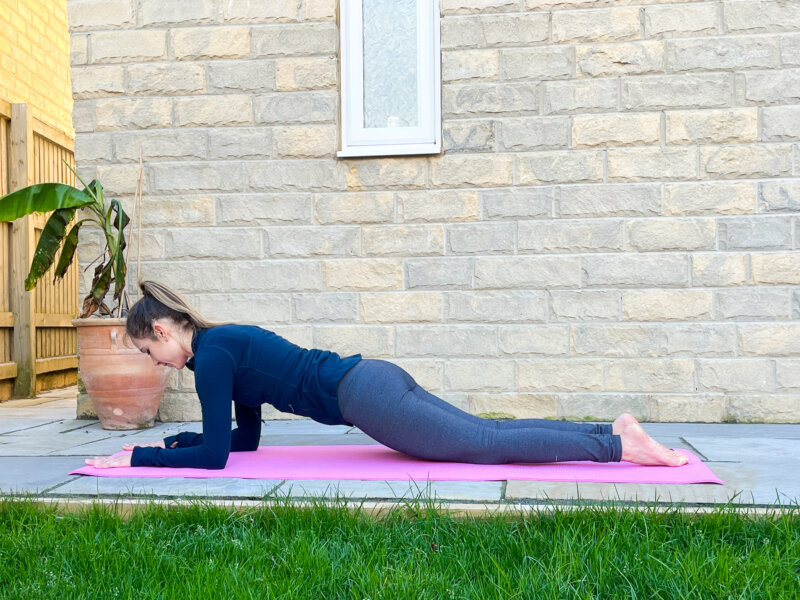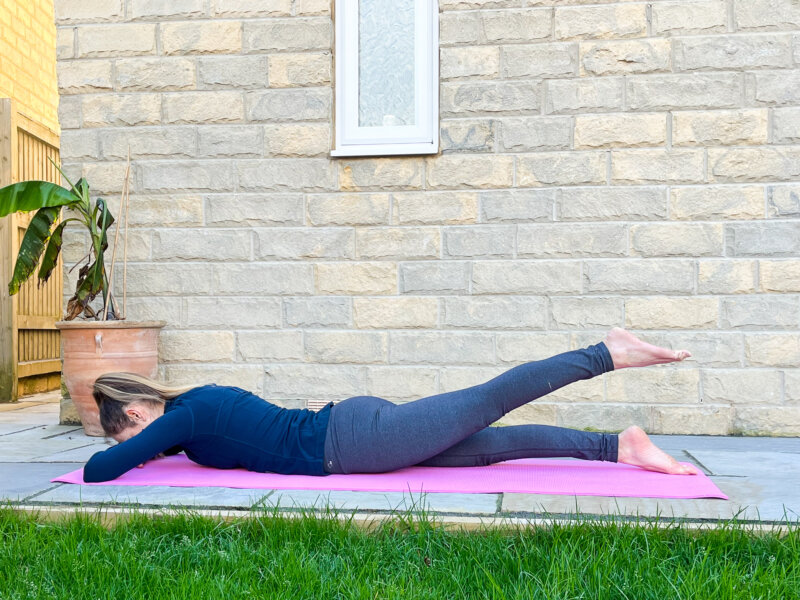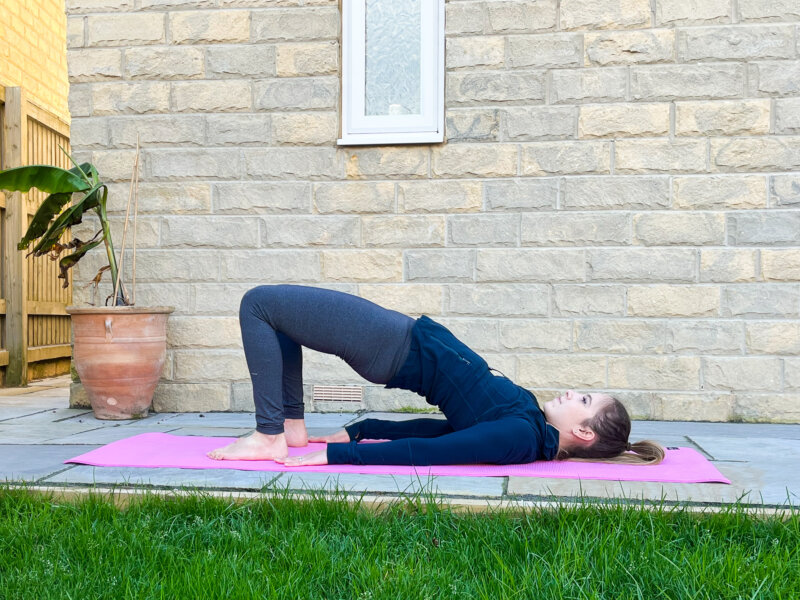I am so passionate about Pilates. After teaching Pilates for over a decade, I can honestly say that Pilates is by far one of my most preferred methods of moving my body (that, and Yoga and daily hikes!). Not only was it designed to strengthen, lengthen and tone muscles but it also improves posture, balance, flexibility and mobility along the way. Whatever your goal may be (to lose weight, tone up, improve your fitness, flexibility or core and muscle strength) Pilates is for you.
The beauty of Pilates is that it is suitable for anyone at any age and at any point in life. Wherever you are in your life journey, Pilates will always help improve your quality of life.
My main goal when teaching is to encourage all of my students to tune into their bodies and work in a way that suits them. I want you to work and move in a way that enhances your unique body.
That’s what the next 6 weeks is all about!
Over the next 6 weeks, I want to share just a few ways in which Pilates can help support and enhance the physical wellbeing of your body so that you can feel more energised, vibrant and full of life – Yes, Pilates is an incredible form of strength training but it’s also a powerful method of mindfulness, meditation and relaxation.
To kick things off with my 6 Week Healthy Body Series, I wanted to share 5 Pilates exercises that can help alleviate chronic back pain as well as prevent and reduce the symptoms of back pain, by strengthening the muscles of the posterior chain & core, improving posture & alignment as well as improving spinal mobility & relieving muscular tension.
Back pain can be debilitating. It can stop us from doing the things we love, can prevent us from performing daily tasks with ease, can leave us wincing with every sudden turn or sharp move and can even mean we have to take time off work or stop us from enjoying life with the same joy, comfort and enthusiasm.
Pilates has been shown to help reduce symptoms of chronic back pain, however it’s important (as with any form of movement) to listen to your body and practice these exercises mindfully. Take your time when performing Pilates exercises, especially if you have any form of discomfort or back pain and be gentle with your body. Listen to your body and take pain and discomfort as a sign. If something hurts, then stop.
A few of the exercises that I’m going to share with you focus on symmetry and creating balance in the body. So think about keeping your pelvis level and hips and shoulders even. Something I will touch on with each individual exercise, so if you forget I’ll be there to remind you!
While we’re on the topic of shoulders – make sure that your shoulders are always being drawn down your back and away from your ears. This is called shoulder stabilisation and this is what we want to maintain throughout any Pilates practice. Not only will this help to maintain a neutral spine and improve posture, but many of us hold a lot of tension within the upper body and focusing on drawing the shoulders down the back and elongating through the neck can help when it comes to reducing physical symptoms of back pain.
Finally, before we start, even though we are focusing on the back, it’s important to remember that when we work our core that it includes our back muscles as well! Don’t forget core engagement with these exercises as the front and back of your body work together in strengthening the trunk and therefore your back too!
- A HELPFUL REMINDER: If you’re brand new to Pilates, having been meaning to try it for a while, establish a more regular Pilates practice, pick it back up after having a few years off, or simply want to learn more, then I’ve created an online course just for you! My 6 Week Beginner Pilates Course is completely online with 6 on demand classes and can be accessed at your own pace. You’ll not only learn the history of Pilates and how it can benefit your body and mind, but also refine your technique and learn how to Practice Pilates safely. How amazing does that sound? Check out my 6 Week Beginners Course here.
Ok, beautiful, are you ready?
Here are 5 Pilates exercises to help with back pain:
I’ve included how many repetitions I’d recommend, however be mindful of your body and tailor these exercises to suit you.
It’s also important to remember that everybody is unique and therefore the way these exercises are performed may need to be tailored to the individual. These step-by-step guidelines are there as a general ‘guide’ and if you require further information or help then please do not hesitate to get in touch.
*Remember to listen to your body and move in a loving way for you. By taking part in this exercise program, you are acknowledging that you are fit, well and healthy to do so and understand that you are performing the exercises at your own risk. Always consult your physician if you’re unsure or if you’re struggling with chronic back pain. And if you’d like to find out more information on how Pilates can help you and your body, then let’s have a chat!
**I have also filmed a YouTube Pilates flow showing you how you can sequence these exercises together which you can find either by clicking here, or by heading to the bottom of this article.

ROLL DOWNS
5-8 Repetitions
Helps improve spinal mobility through flexion & extention and muscular strength.
- Start by standing tall, with your feet hip width, softly bending through the knees and finding neutral spine. Relax your shoulders down your back and lift up tall through the crown of your head. Evenly ground through both feet and engage your core.
- Inhale to prepare and on the exhale begin to tuck your chin in, soften through your shoulders and slowly hinge from your hips to roll down through your spine, lowering your body down towards the mat.
- Keep a soft bend in your knees.
- Inhale at the bottom and on the exhale, engage your core by drawing naval in towards the spine and begin to stack your spine back up, one vertebrae at a time, finding neutral spine once more.
- Use your breath and core engagement to help you move throughout this exercise and focus on moving slowly, with control and intent. If you notice any sticky areas of the spine, then move even slower to help improve mobility and relieve any tension.
- VISUALISATION: Imagine as though the vertebrae in your spine are like the links of a bicycle chain; lowering down and lifting up through this bicycle chain one link at a time.

BOX POSITION SPINAL TWISTS
5 Repetitions on each side
Helps improve spinal mobility through spinal rotation, release tension in the upper body and strengthen the upper body.
- Start on all fours in a box position with hands directly underneath the shoulders and knees underneath the hips, hip width apart.
- Engage your core, maintaining neutral spine with the crown of your head drawing out in front of you (gazing down towards the mat) and your shoulders soft and down the upper back.
- Bring the right fingertips to your right temple/
- Inhale as you rotate through your spine, sweeping your right elbow up towards the sky. You may choose follow your elbow with your gaze if this feels comfortable.
- On the exhale, twist the other way bringing your right elbow to touch your left elbow of the supporting arm.
- Inhale to sweep the elbow back up and repeat.
- You may choose to practice this exercise flowing with your breath, or you may choose to practice a static stretch by threading your right arm under the left side of the body and releasing your right cheek and shoulder down onto the mat.
- Repeat on the other side.

‘EASTER EGG’ EXERICSE (FOREARM PLANK)
8-10 Repetitions
Helps improve core strength & stability, lower back strength & mobility and upper body strength.
- Start by lying prone on the mat (on your front) and supporting yourself on your forearms, with your elbows directly under your shoulders and your forearms parallel to one another.
- Draw your shoulders down your back and away from your ears, elongating through your neck.
- Engage your core, drawing up through your pelvic floor and inhale to prepare.
- On the exhale, begin to tuck your pelvis underneath you and start to lift your hips away from the mat. Maintaining core engagement here is paramount, as is shoulder stabilisation - so watch that your shoulders stay down your back and avoid hunching them up towards your ears.
- Try to keep your pelvis level as you lift your hips.
- Lift your hips just a couple of inches off the mat.
- Inhale to hold at the top and then exhale to lower your hips back down towards the mat.
- After a few repetitions, you may choose to lift your hips slightly higher (being mindful to never lift your hips higher than shoulder height). Maintain core engagement and neutral spine throughout and if you feel any pain or discomfort in your lower back, then lower back down immediately and stop.
- Always perform this exercise slowly and with control, focusing on your breath and linking movement with breath.
- VISUALISATION: Although this is commonly known as a Forearm Plank, I like to call this exercise: Easter Egg Exercise. Imagine as though you have 2 Cadbury’s Creme Eggs. As you lift your hips a couple of inches, you’re able to place these Creme Eggs underneath your hips and maintain this hold as you inhale at the top. If you then choose to lift a bit higher, you only lift so high as though you can get a large chocolate Easter egg underneath your pelvis.

PRONE SWIMMING
6-8 Repetitions on each side (making sure to perform the same amount on each side)
Helps with lumbar (lower back) strength, core strength and pelvic stability.
- Lying prone on the mat (on your front), keep your feet hip width and draw your shoulders down your back. You may choose to rest your head on a block or prop for support or even on your arms if that feels comfortable.
- Maintain a neutral spine, with your gaze down towards the mat and the crown of your head drawing out in front of you.
- Engage your core by lifting your naval up towards your spine and away from the mat, soften through your shoulders and on the exhale, begin to float one leg away from the mat and inhale to lower back down. Repeat on the other side.
- This isn’t so much about how high you can lift your leg as it is creating length through the leg.
- Focus on keeping your pelvis level whilst performing this exercise, with both sides of the pelvis staying in contact with the mat. You may choose to even place your hands under both sides of the hips (I highly recommend this) to monitor your pelvis. Notice if your hips begin to rock from side to side or if one hip lifts fully off the ground as the leg lifts. Try to level off the hips and keep them both connected to the ground as alternate legs lift and lower.
- Again try to keep this movement slow and controlled, focusing on moving with your breath.
- If both hips are level and you’re able to maintain core engagement, you may choose to float both legs off the ground.
- Always think about your shoulders and watch that as you continue with this exercise they stay stabilised. There should be no tension or jolting movements within the upper body.
- VISUALISATION: Imagine as though you have a golden thread attached to your big toe and it is pulling behind you helping to elongate your leg as it lifts away from the mat.

BRIDGE
(8-10 Repetitions)
Helps to mobilise and strengthen the spine, open up through the front facial line of the body, strengthens the glutes and lower back and improves pelvic stability.
- Start by lying supine on the mat (on your back), with your knees bent and feet on the mat. Walk your heels in towards your bottom (ideally, when in Bridge, we want the feet to be directly under the knees). Keep the feet and knees hip width.
- Draw your shoulders down your back and rest your arms by the sides of your body.
- Inhale to prepare and as you exhale, tuck your pelvis underneath you and start to lift your hips away from the mat one vertebrae at a time until you’re in a ski-slope position. There should be a direct line of energy from your knees, to your hips, to your shoulders.
- Squeeze your glutes at the top here to help protect and strengthen your lower back.
- Inhale at the top and exhale to roll back down, one vertebrae at a time.
- Watch out for any areas of tension within the back, or sticky parts of the spine, and if you notice these areas then take your time and move a little bit slower to help mobilise these areas.
- Move slowly, with intent and control as the main objectives and focus on moving with your breath.
- VISUALISATION: Imagine as though your back and the mat are like two pieces of Velcro, peeling apart from one another bit by bit and lowering back down smoothly.
Want to learn more about how Pilates can benefit your body?
Why not check these out:
- Online on demand Pilates classes (Practice Pilates with me anywhere, at any time – as long as you have access to internet!)
- My online Pilates Library (A library of a variety of 15 minute workouts so you can tailor your workout to suit your goal, ability and time-frame)
- New to Pilates – try my 6 Week Beginners Pilates Course (Can be accessed at your own pace)
1:1 Health Coaching
THESE ARE INDIVIDUAL SESSIONS THAT HELP YOU TRANSFORM YOUR LIFE AND HEALTH TO EMPOWER YOU TO BE THE CONFIDENT,...